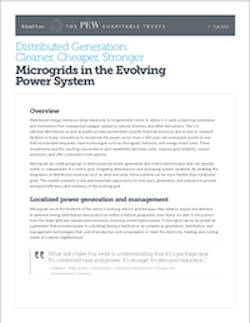Distributed energy resources allow electricity to be generated closer to where it is used, protecting businesses and institutions from unexpected outages caused by natural disasters and other disruptions. The U.S.
national laboratories as well as public-private partnerships provide financial resources and access to research facilities to foster innovations to modernize the power sector from a 100-year-old centralized system to one that incorporates disparate clean technologies such as microgrids, batteries, and energy smart tools. These investments and the resulting new products and capabilities in distributed energy resources decrease costs, improve grid reliability, reduce emissions, and offer consumers more options.
Microgrids are small groupings of interconnected power generation and control technologies that can operate within or independent of a central grid, mitigating disturbances and increasing system reliability. By enabling the integration of distributed resources such as wind and solar, these systems can be more flexible than traditional grids. This market presents a new and important opportunity for end users, generators, and planners to provide increased efficiency and resiliency in the evolving grid.
